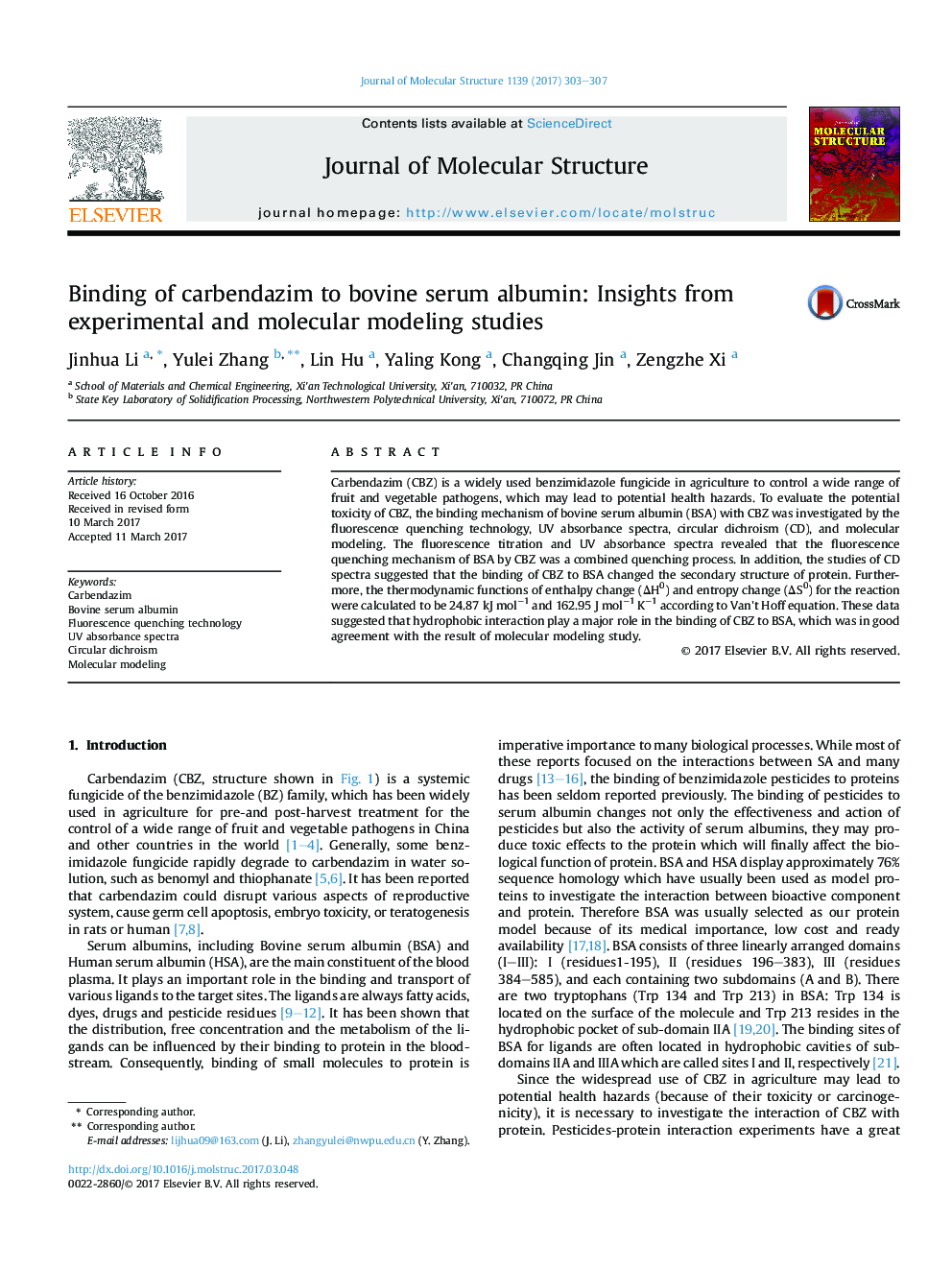| Article ID | Journal | Published Year | Pages | File Type |
|---|---|---|---|---|
| 5161275 | Journal of Molecular Structure | 2017 | 5 Pages |
Abstract
Carbendazim (CBZ) is a widely used benzimidazole fungicide in agriculture to control a wide range of fruit and vegetable pathogens, which may lead to potential health hazards. To evaluate the potential toxicity of CBZ, the binding mechanism of bovine serum albumin (BSA) with CBZ was investigated by the fluorescence quenching technology, UV absorbance spectra, circular dichroism (CD), and molecular modeling. The fluorescence titration and UV absorbance spectra revealed that the fluorescence quenching mechanism of BSA by CBZ was a combined quenching process. In addition, the studies of CD spectra suggested that the binding of CBZ to BSA changed the secondary structure of protein. Furthermore, the thermodynamic functions of enthalpy change (ÎH0) and entropy change (ÎS0) for the reaction were calculated to be 24.87Â kJÂ molâ1 and 162.95Â JÂ molâ1Â Kâ1 according to Van't Hoff equation. These data suggested that hydrophobic interaction play a major role in the binding of CBZ to BSA, which was in good agreement with the result of molecular modeling study.
Related Topics
Physical Sciences and Engineering
Chemistry
Organic Chemistry
Authors
Jinhua Li, Yulei Zhang, Lin Hu, Yaling Kong, Changqing Jin, Zengzhe Xi,
